The Harvest: This Week in Rural China – Dispatch No. 15 (28 March 2025)
Examining Financial Reforms, Sustainable Rural Models, and the Rise of Rural Tourism in China’s Countryside
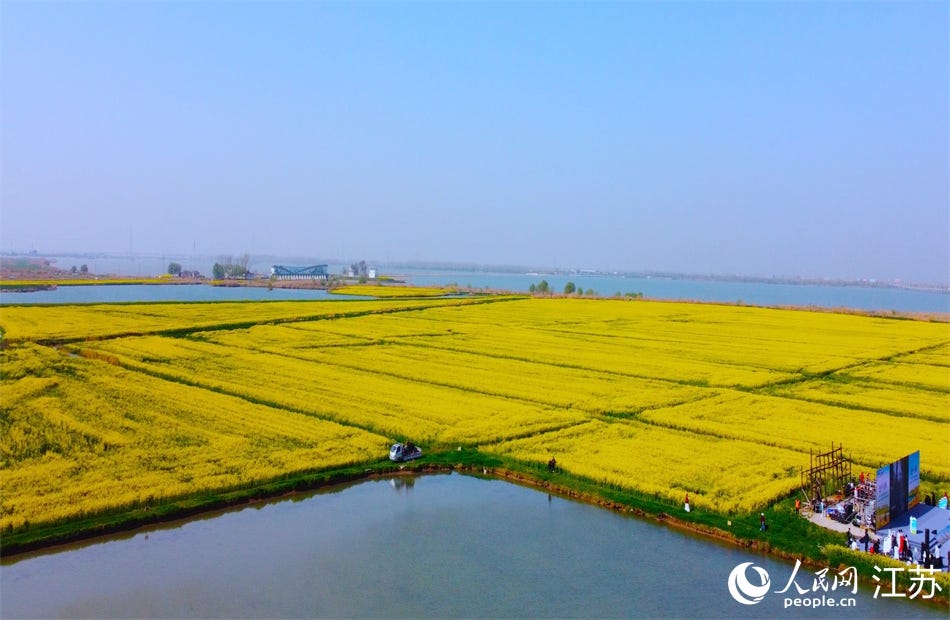
This week, The Harvest brings you a snapshot of some of China’s most pressing agricultural and cultural challenges:
Beijing Moves to Protect Rural Businesses from Financial Instability
The “Four-in-One” Model: A Path Toward Sustainable Rural Development in China
Revitalising Yuanling: Hunan’s Rural Transformation Faces Tough Questions
Rural China Tourism Showcase: A Step Toward Sustainable Development
I always welcome your insights, as your feedback helps shape the direction of every dispatch. Please share your thoughts in the comments below or reach me at nathan@thisweekinruralchina.com.
As always, The Harvest remains free for all readers. If you find value in these dispatches and want to support the continued work behind them, consider becoming a paid subscriber. Your support helps sustain this project and ensures we can continue publishing consistently.
Now, let’s dive into this week’s stories:
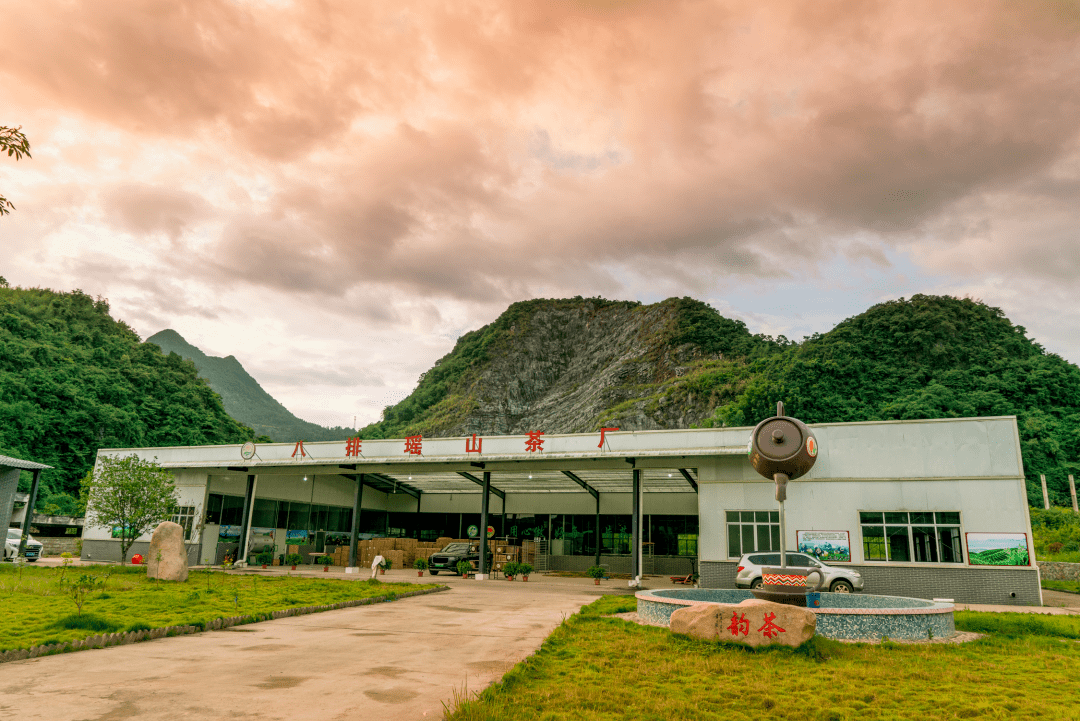
Beijing Moves to Protect Rural Businesses from Financial Instability
This week, the Chinese government has focused on irresponsible financial practices, particularly those of large organisations whose actions heavily impact small and medium-sized enterprises (SMEs) in rural areas. This focus has materialised in the form of a new regulation, the Notice on Standardising Commercial Bill Acceptance and Discounting (关于规范商业汇票承兑与贴现业务的通知), which seeks to address systemic issues in business transactions. The regulation, tightening oversight on commercial bill acceptance and discounting, signals Beijing’s growing recognition of widespread financial irregularities, especially those affecting SMEs and businesses in rural China.
For years, SMEs in rural regions have struggled with erratic payment cycles, delayed invoices, and opaque financing channels. Many rely on commercial bills—paper-based or digital promissory notes that promise future payment. However, these instruments have increasingly become vehicles for financial manipulation, leaving rural populations without the leverage to demand payments or report issues to authorities. Large firms often delay payments to smaller suppliers, leaving them cash-strapped. Meanwhile, banks and financial institutions engage in risky discounting practices that further exacerbate market instability.
The new regulation, issued by the People’s Bank of China and other state financial regulators, seeks to tackle these issues by enforcing stricter auditing of bill transactions and prohibiting excessive discounting by financial institutions. By tightening scrutiny, authorities aim to restore trust in the system and ensure SMEs receive timely payments.
For rural businesses, the impact could be significant. Many farmers, small-scale manufacturers, and independent traders depend on commercial bills for liquidity. In regions where cash flow is already precarious, delayed payments can mean the difference between survival and closure. With Beijing’s latest intervention, there is cautious optimism that financial fairness may improve—though, as always in rural China, whether enforcement will match policy remains to be seen.
This move also reflects a broader shift in China’s economic strategy. Amid slowing growth and rising debt concerns, Beijing is increasingly prioritising financial stability over unchecked expansion. Regulators are sending a clear message: reckless financial practices will no longer be tolerated.
While the new policy is a step in the right direction, its success will hinge on execution. If implemented effectively, it could provide much-needed relief for China’s SMEs and rural businesses, reinforcing the foundations of the country’s vast economic network.
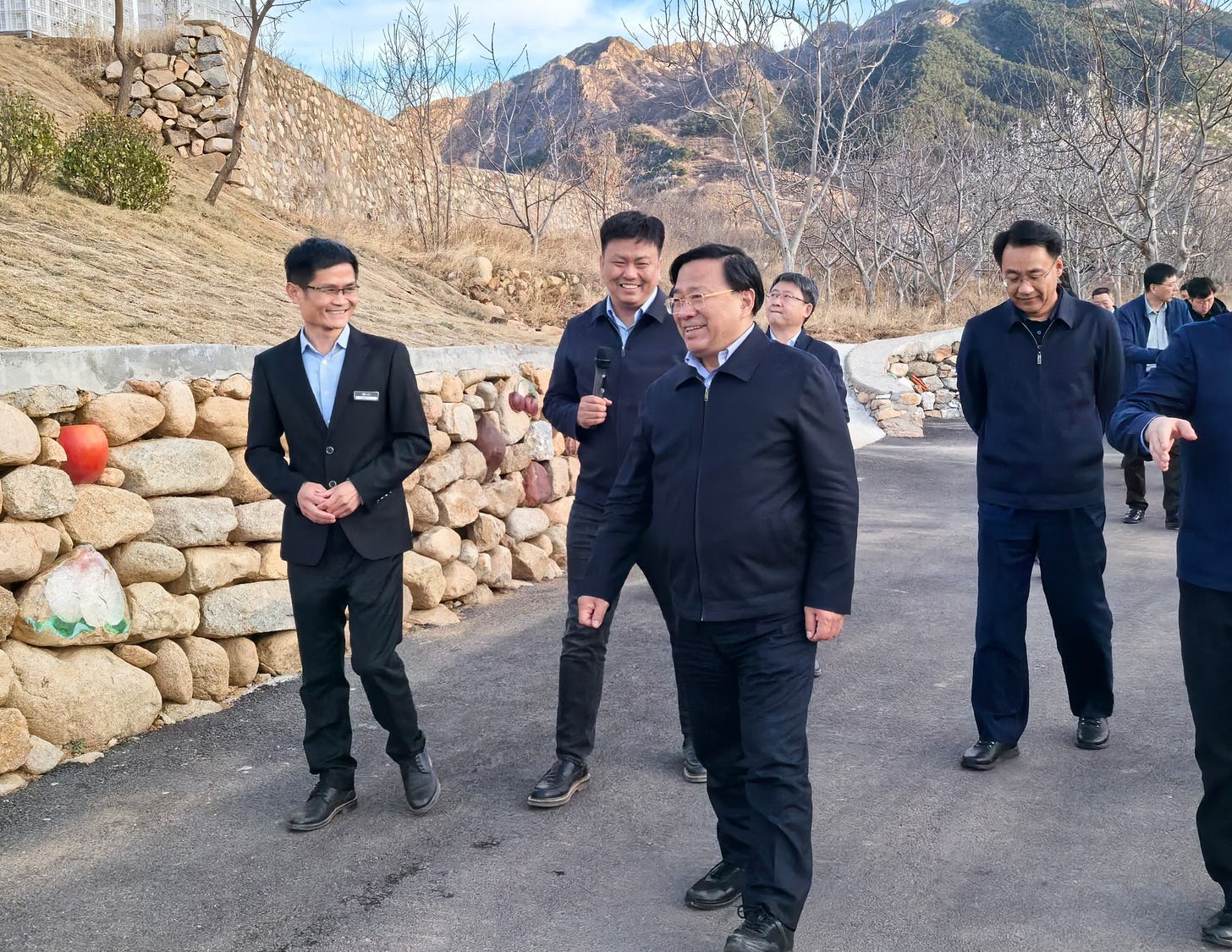
The “Four-in-One” Model: A Path Toward Sustainable Rural Development in China
This week, Han Jun, China’s Minister of Agriculture and Rural Affairs, visited Pinggu District in rural Beijing to highlight the “四位一体” (Four-in-One) model, which aims to help farmers in rural areas overcome challenges such as lack of funding, technology, and market access. This model brings together four key components—government, financial institutions, enterprises, and cooperatives—to work collaboratively, creating a more sustainable and prosperous rural economy.
During his visit, Han underscored the importance of fostering cooperation among these sectors to tackle issues like capital shortages and technological gaps, which have historically hindered rural development. By pooling resources, expertise, and innovation from financial institutions, enterprises, and cooperatives, the model seeks to support farmers and drive long-term growth.
One example of success is the partnership between Beijing-based enterprise Zhengda Livestock and 1,600 local farmers. This cooperative approach provides access to economies of scale, technical support, market access, and funding. As a result, some participants are earning more than 40,000 yuan (approximately $5,700) per year. This model not only boosts individual incomes but also encourages collective growth by strengthening cooperation and improving market access.
The government plays a crucial role in creating the infrastructure and policy environment to support these efforts. In Pinggu District, for example, the government has invested in agricultural innovation centres and research facilities, where new technologies and practices are developed and shared with farmers to help them compete more effectively.
Financial institutions provide essential capital for modernising agriculture, reducing the economic barriers that often prevent access to advanced equipment and techniques. Through loans and other financial products, they enable farmers to expand their businesses and increase production capacity.
Enterprises, particularly those in agriculture, contribute technical expertise and market networks. Many partner with cooperatives to offer training, improve farming techniques, and facilitate direct sales to larger markets. These collaborations ensure that rural producers are active contributors to the agricultural supply chain, not just passive participants.
Cooperatives unite farmers, fostering mutual support and facilitating collective resource use. These groups can negotiate better prices, share equipment, and speak with a unified voice when dealing with enterprises and financial institutions. By organising farmers, the model amplifies their bargaining power, creating a more balanced relationship with other players in the sector.
The “Four-in-One” model is part of China’s broader strategy to combat rural poverty and promote sustainable development in agriculture. By integrating government support, financial capital, enterprise innovation, and farmer cooperation, China is building a more resilient and self-sustaining rural economy. As the model expands across more areas, it could pave the way for a more equitable and prosperous future for China’s farmers.
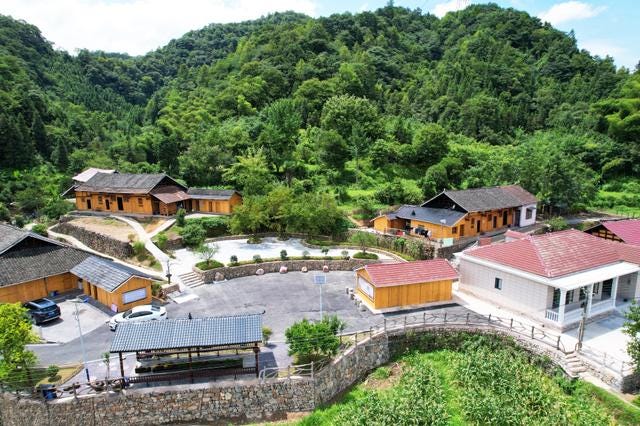
Revitalising Yuanling: Hunan’s Rural Transformation Faces Tough Questions
This week, Hunan Daily ran a story on rural revitalisation in Yuanling County, a district in the heart of Hunan province. The article outlined the county’s extensive efforts to overhaul rural living standards, emphasising the transformation of the physical environment and community structure.
Yuanling, a once-overlooked area marked by traditional, rural hardships, has become a model for a broader provincial push to improve the lives of its countryside inhabitants. The article focused on creating He Mei (和美) villages—a state-led initiative to improve infrastructure, beautify homes, and encourage economic diversification through targeted development projects. In Yuanling, these efforts are seen in clean streets, renovated houses, and small-scale farming that combines aesthetics with economic function. Additionally, the county has promoted local tourism, integrating cultural experiences with agriculture to provide new revenue streams for farmers.
However, while the transformation is striking, the article also touches on the complexities and limitations of these rural revitalisation schemes. For one, the He Mei initiative requires extensive state funding, with Yuanling receiving an influx of 4.9 billion yuan in recent years. This heavy investment, while boosting local infrastructure, raises questions about the sustainability of such projects when state support diminishes over time. There’s also the matter of rural labour—the younger generations often move to urban centres in search of better opportunities, leaving behind an ageing population that may struggle to maintain these newly improved villages.
For rural Hunan residents, the story is a hopeful vision of improved living conditions and a reminder of the ongoing challenges. While new houses and a cleaner environment are visible, many rural citizens may still face issues like job scarcity, education deficits, and the strain of keeping up with the relentless pace of change. Will these He Mei villages truly provide long-term solutions, or are they merely a temporary facelift for deeper issues?
In the context of broader rural revitalisation across China, the article sheds light on such ambitious projects’ successes and potential pitfalls. For the people of Yuanling and the wider rural Hunan population, whether these changes will offer honest, lasting improvement to their daily lives remains open as the region grapples with preserving its rural identity while embracing the inevitable pressures of modernisation.
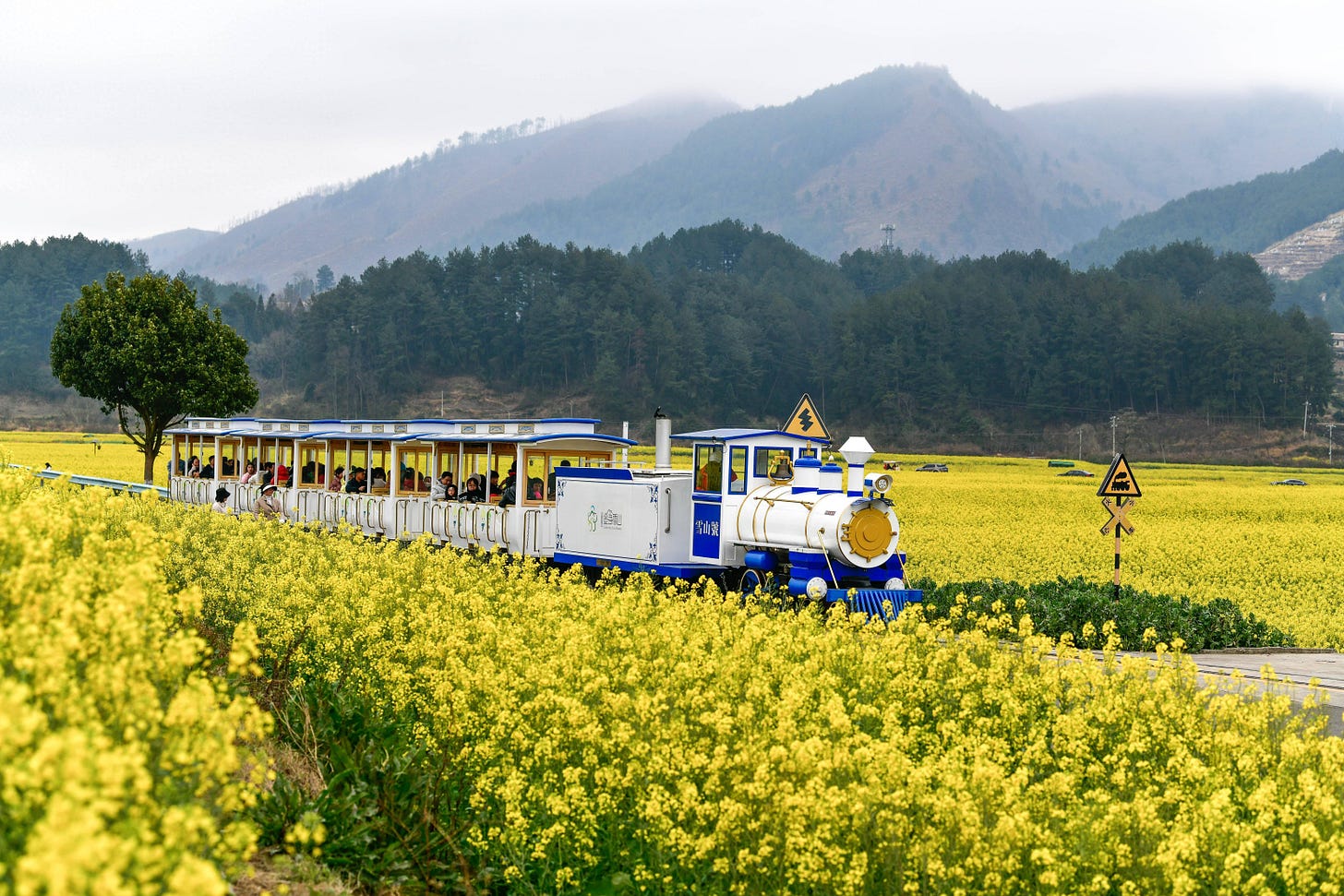
Rural China Tourism Showcase: A Step Toward Sustainable Development
This week, China’s rural tourism sector has been receiving the spotlight with the launch of the 2025 Beautiful Countryside Leisure Tourism Promotion (2025美丽乡村休闲旅游行) event, held in the picturesque town of Jixi, Anhui. The event, which took place on 25 March, highlighted the growing rural tourism sector across the country, focusing on the intersection of agricultural development and tourism. The event unveiled 60 new, curated routes, offering a diverse range of travel experiences—from the “Strolling Through Flower Seas” (漫步花海) in Wuhu’s Wanzhi District, Anhui to vibrant countryside tours in locations like Chongqing’s Banan District.
Rural tourism in China has seen a surge in recent years, with an increasing number of domestic tourists seeking an escape from the urban grind to reconnect with nature and heritage. This trend is being capitalised on across the country, with local governments integrating leisure activities with agricultural experiences. Visitors now have the opportunity to explore everything from picturesque flower fields to working farms, offering a taste of traditional rural life in regions such as Anhui, Yunnan, and Sichuan.
One of the standout features of this year’s event is the emphasis on cultural heritage and eco-tourism. Across various regions of rural China, initiatives like “Strolling Through Flower Seas” and similar routes aim to attract visitors while strengthening the preservation of agricultural history. Traditional festivals, such as flower-viewing and local harvest celebrations, along with performances of opera and folk art, add layers of cultural immersion to the tourism experience, enhancing the overall appeal for both domestic and international tourists.
In 2024, rural tourism in China saw significant growth, with leisure agriculture becoming one of the fastest-growing sectors in the industry. With revenues projected to reach nearly 900 billion yuan, the sector has emerged as both an economic pillar and a vital tool for revitalising rural communities. This aligns with the Chinese government’s broader rural revitalisation strategy, which seeks to improve local livelihoods through sustainable development models.
China’s rural tourism push is an important example of how regions leverage their natural beauty and cultural heritage for economic and social gains. By attracting domestic and international visitors, these regions promote tourism while fostering long-term sustainable development. This week’s event signals a growing recognition that rural tourism is not just about attracting tourists—it’s about creating an ecosystem where agriculture, culture, and sustainability work hand in hand.
Between Mountains and Waters - Photo of the Week for 28 March 2025
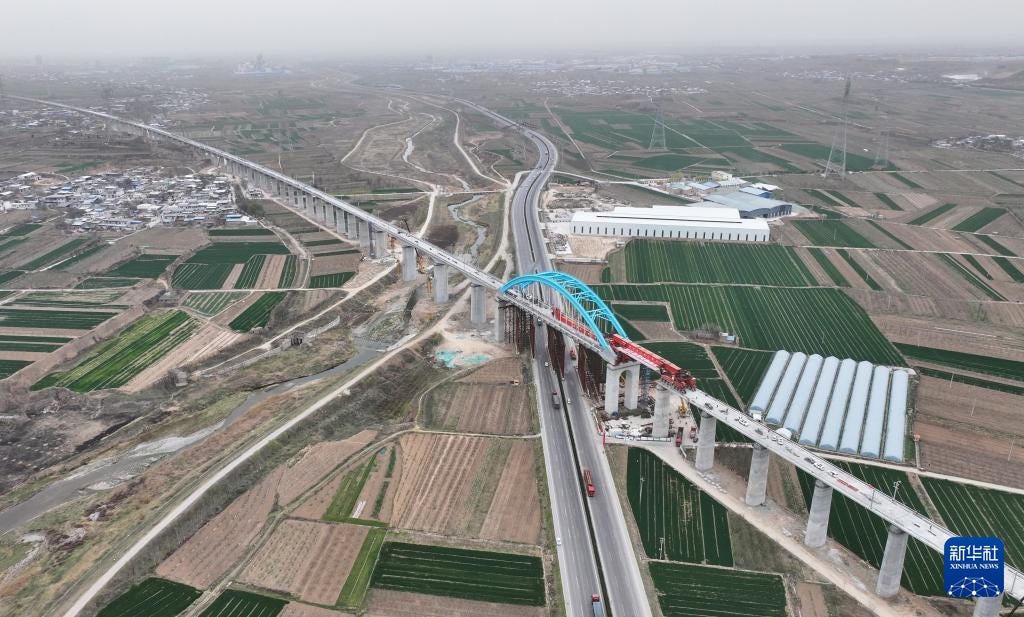
This week’s image captures a moment in the construction of the Xi’an-Yan’an High-Speed Railway’s Fuping Grand Bridge, a monumental infrastructure project slicing through rural Shaanxi. Taken on 26 March, the high-speed rail will soon reduce travel time between Xi'an and Yan’an to just one hour.
However, this image also reflects the side of rural China often ignored in the romanticised portrayals of countryside life. While these massive infrastructure projects race ahead, they leave behind an alien structure—an elevated bridge cutting through quiet agricultural landscapes. Passengers speeding past at hundreds of kilometres per hour will never stop here, but the pollution, the fumes, and the industrial sprawl of warehouses and construction sites are now part of the landscape. The contrast between this looming, impersonal development and the once tranquil rural life beneath it paints a stark picture of the costs of modernisation in the countryside.
Photo by Zhang Bowen, Xinhua News Agency




